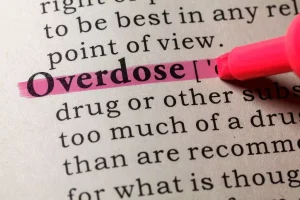
Standard THC urine drug tests typically use immunoassay screening with a 50 ng/mL cutoff level. Positive results are often confirmed using more accurate GC/MS (Gas Chromatography/Mass Spectrometry) testing, which has a lower cutoff of 15 ng/mL. This two-step process helps reduce false positives while ensuring accurate results. The detection period for even the most infrequent users of cannabis, and even some people exposed to second-hand smoke is 90 days. As a cannabinoid, THC is fat-soluble so if you’re a heavy cannabis user with a greater amount of body fat trace amounts of THC and other metabolites can linger in your body. THC can attach to body fat which means you can run https://ecosoberhouse.com/article/how-to-stop-alcohol-shakes-tremors/ the risk of triggering a positive result well after you’ve used cannabis.
Marijuana Detection in Urine Tests:
Over time, THC stored in your body’s tissues and organs is released back into the bloodstream. Testers can use the hair of any body part to test drug residues and additional testing methods to confirm the presence of drugs. drug addiction Saliva tests have the shortest detection window, with THC detectable for hours after use. If you’re in a pinch and looking to cleanse THC from your system, here are some tips tailored for each type of drug screening mentioned above. Just keep in mind that, while these methods might help, they are not foolproof. The only way to ensure a negative test result is to abstain from use before the test altogether.
Myth: Regular Weed Smokers Will Still Fail Drug Tests Over 30 Days Later
- Most of the time when people talk about drug tests, they talk about the urine drug test.
- Sure, there are lots of this kind of anecdotal cases but nobody really likes to risk his or her job with something as serious as failing a drug test.
- Factors such as body fat percentage, hydration levels, and individual metabolism rates can influence how long THC stays in your body.
- The only way to ensure a negative test result is to abstain from use before the test altogether.
- Weed detection times vary based on personal factors, drug tests, and lifestyle choices.
However, technology to detect cannabis use in the urine longer than this certainly exists. In fact, with a much smaller cutoff value of 20 ng/mL, regular users can still have detectable cannabis metabolites in their system for over 30 days. On average, urine tests can detect THC from three to seven days. That range will depend on how much marijuana you use and for how long. Tests can detect THC in urine for up to 30 days in a heavy user who uses weed at least once per day. Regular and heavy users are likely to have higher levels of THC in their system, leading to more substantial deposits in their hair.
- The hair test can be positive for up to 90 days after exposure.
- After this initial phase, THC is metabolized by the liver, stored in fat cells, and released slowly over time.
- It’s all about unraveling the mysteries of cannabis in your urine and sprinkling in some tips for a faster detox.
- Get ready for a 30-day encore, with the afterproducts of THC processing detectable in your system for 30 days or more.
- Plenty of employers require their workers to undergo tests to prove the absence of drugs in their system.
Blood tests
It’s also important to know that 15% of drug tests results from hair follicle tests can be inaccurate. Hair color or different treatments can strip some of the content of hair leading to inconclusive or false negative results. One study did find that some heavier cannabis users triggered a positive result in a blood test even after abstaining for 7 days. In general, heavy cannabis users should be concerned about these windows potentially being greater depending on your exposure to THC. Taking tolerance breaks can help decrease the amount of THC and other cannabinoids and metabolites in your system which can help shrink some of these detection windows.

- Since metabolism of edibles is slower, the amount of time it takes to reach peak THC in blood is delayed.
- Many who are facing a drug test but are unwilling to fully give up cannabis turn to synthetic cannabinoids in the hopes of cheating traditional tests.
- While there are several different types of tests on the market, like blood, saliva, or hair, urine samples are the most popular due to their low cost and ease of administration.
- Cannabis sativa contains over 421 chemicals including 61 different cannabinoids, of which delta 9-tetrahydrocannabinol (delta-9 THC) is considered the most psychoactive.
- This shorter detection window in blood tests can be attributed to the fact that THC is quickly metabolized and distributed throughout the body.
Having one or two edibles or smoking once a day may not affect your how long does weed stay in your system results in a hair test. It takes time for THC to be stored in your hair follicles and build up. If you used weed today, the metabolites would only show up in your hair for seven to 10 days afterward. Typically, weed will remain longer in hair and can be detectable for up to 90 days from the day of use.






